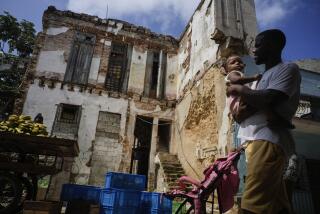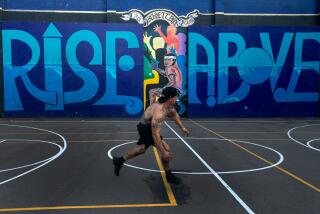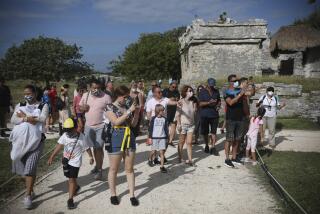Cuba: Go or no? The answer is more complicated than you might think
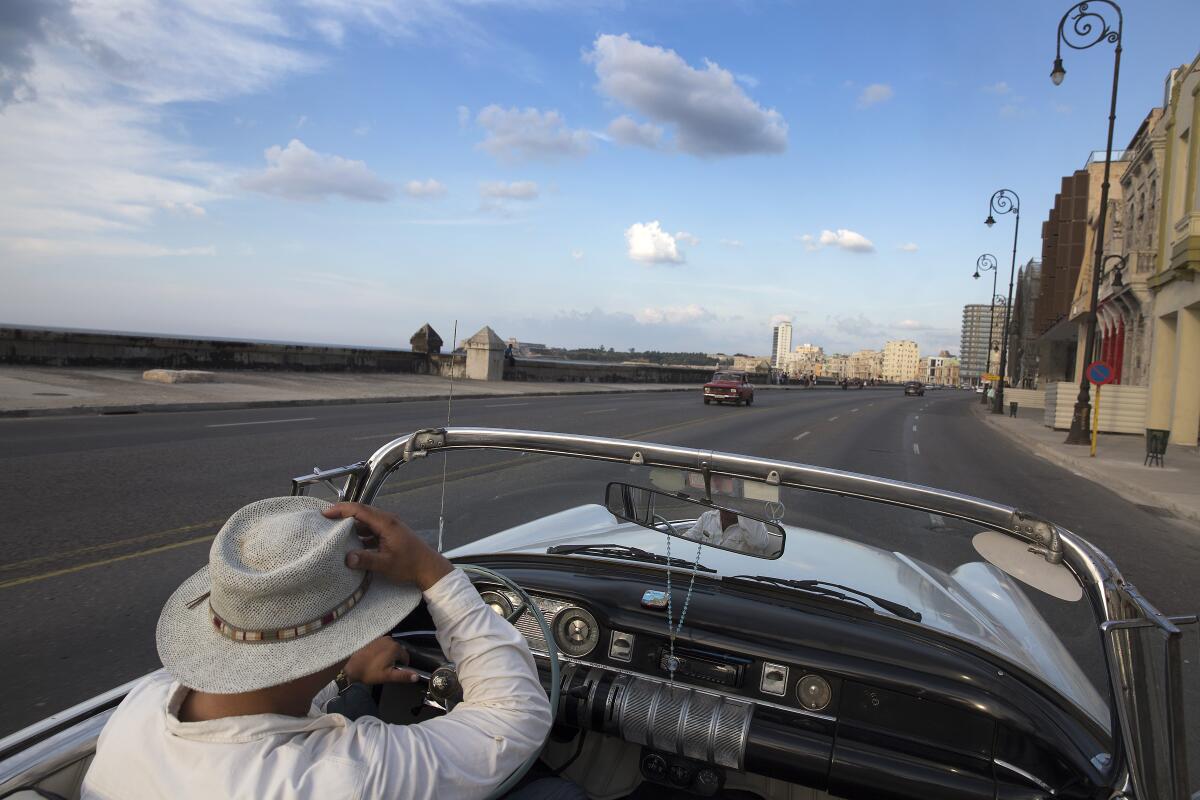
- Share via
SANTA CLARA, Cuba — The image that lingers from my last afternoon in Cuba was nothing I’d have spent time watching anyplace else. But here, in a small park in the eastern city of Santa Clara, on a sunny Sunday last November, I couldn’t stop watching.
A flock of healthy little children was giggling and clapping and jumping up and down to cheerful tootling music, while two garishly painted clowns put on a silly outdoor show and a ring of beaming parents and grandparents looked on.
For the record:
1:32 p.m. Nov. 14, 2019An earlier version of this story incorrectly reported that the Cuban revolution was 50 years ago. It was 60 years ago.
The scene was about as wholesome and apolitical as anything in my 1950s Midwestern childhood and very different from the stereotypes that some Americans hold of this island nation.
I was enchanted. I stopped following our tour leader and kept watching the laughing children while the rest of my group went off to find more Cuban rum and good cigars before departure time.
At first glance, the scene seemed too tame to have anything to do with Cuba’s 1959 revolution. And it was far too ordinary to attract international tourists. It felt more like walking into a family party, so I started chatting with bystanders in my tourist Spanish, hoping to be part of it.
“How often does this show happen?” I asked one of the grandfathers, a trim man in late middle age. “Every Sunday,” he said and smiled.
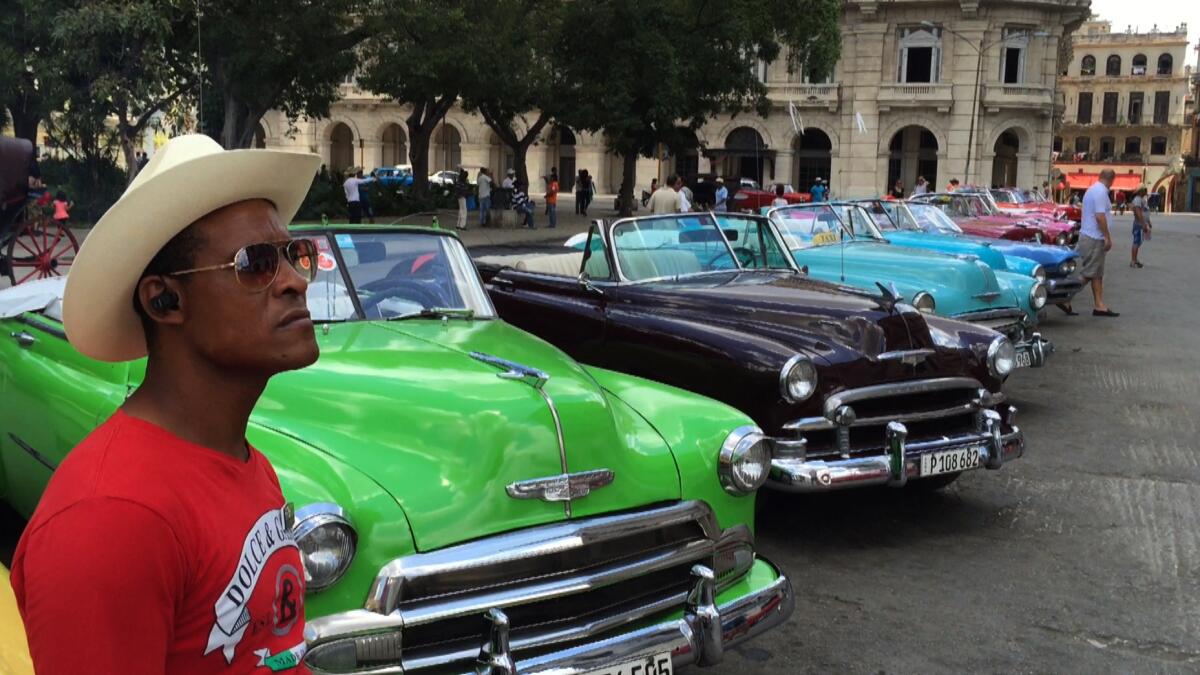
My next question was embarrassingly American: “How much does it cost?” The man looked mystified.
“I mean, do you have to pay for this?” No, he said, still looking puzzled.
The Sunday show was a local institution, and it was free, like so much else in Cuba. Universal health care, for example. Public education is high quality and free, from kindergarten through high school, and university classes are so affordable that some Cubans hold degrees in several fields. Adult literacy, UNESCO says, is virtually 100%.
‘We don’t live good’
This is Cuba, 60 years after the revolution, more than two decades after the Soviet Union plunged it into financial chaos and a few months after changes in U.S. policy whipsawed American travelers and Cuban citizens who had been benefiting from an increase in U.S. visitors.
But there’s still a big downside to life here 60 years after the revolution.“We live,” an older Havana man said to me on another visit here three years ago, “but we don’t live good.”
The man was in grade school when Fidel Castro came to power in 1959, and now he was a retiree. Sometimes the monthly government rations don’t go far enough for everybody to get their share, he said, and the stores run out of basics. Streetlights in his neighborhood often don’t work. And if you want anything like a new vacuum cleaner or a stove, his wife added, the best bet is to get somebody to bring it in from Panama.
On six visits to Cuba since 1999, including the one last fall, I’ve had a chance to see changes in the daily lives of its people thanks, in part, to international tourism. About 4.8 million foreigners visited last year, the equivalent of almost half the total population. About 638,000 of them were Americans, according to CREST, the Center for Responsible Travel.
The numbers of foreign visitors had been growing every year, boosting Cuba’s economy even before President Barack Obama and Raúl Castro, Cuba’s head of state, restored diplomatic relations in 2015.
In June, President Trump clamped down, canceling the loose “people-to-people” category of U.S.-sanctioned group travel to Cuba.
For Cuba travel to be “sanctioned” by the U.S. government, the money that individual American travelers spend here must benefit ordinary Cubans, not fall into the hands of the Cuban government. Rules for organized groups are different but now Americans traveling individually are supposed to stay in private homes, eat in privately owned restaurants, called paladares, and shop in privately owned stores.
Cuba has loosened its own rules for travel for its citizens. Cubans can travel outside their country and can legally operate small businesses and directly buy and sell their own houses and cars.
Restaurants have better food and more of it, and paladares aren’t clandestine anymore. There are more places to shop and more imported stuff to buy, for visitors and Cubans who can afford it. And there are far more places to stay —including in family homes and rentals including Airbnb — in a range of prices.
But even so — even at a peaceful children’s show on a bright Sunday afternoon — the 1959 revolution is never far away. Especially not in Santa Clara, where the mortal remains of guerrilla leader Che Guevara are enshrined in a dramatic memorial.
Another nearby monument commemorates the attack on the Tren Blindado, the armored troop train that Guevara’s men blew up here on the last day of December 1958. Dictator Fulgencio Batista fled the country the next day.
Around the corner from the Santa Clara park, the words “Gracias, Fidel” were painted in 3-foot-tall black letters across a wide façade. And there was a large sign in the little park itself, with Fidel Castro’s image and a long quotation, not surprising because he was given to lengthy speeches. I snapped a picture of it to read later.
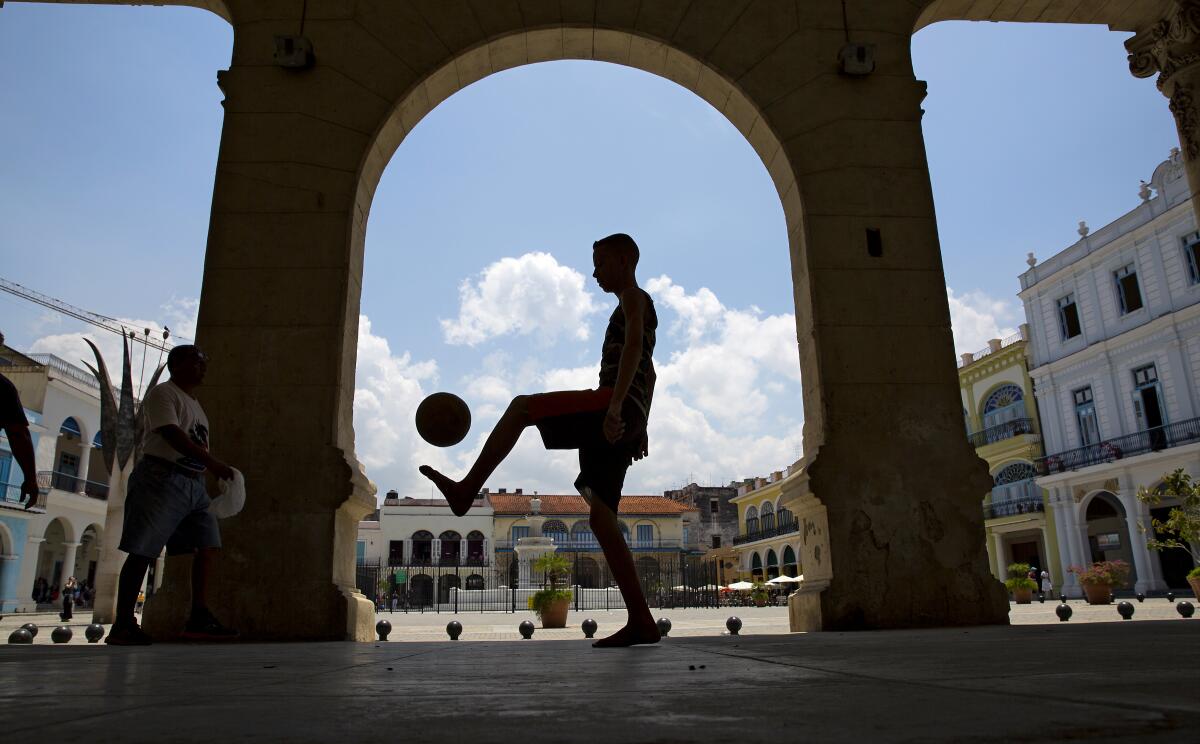
Then I went back to watching the cute kids and the clowns and a couple of old men leading wooden goat carts, giving rides to toddlers.
It wasn’t always thus
On my first visit, in 1999, the towns looked like a developing nation. Havana was especially shocking: rundown buildings, empty storefronts, ancient cars held together with wire, house paint and hope. Scary dark side streets. Restaurants with only one or two items on the menu, usually moros y cristianos, black beans and rice.
Back then, a visitor could get better food in the paladares, black-market restaurants, often in people’s homes; they were unmarked so you found them by tapping into the rumor mill. Or their operators found you, usually at night, in neighborhoods where the streetlights were few or none.
Strangers would materialize out of the darkness, murmuring invitations to home-cooked meals at low prices. The menu would feature foods that ordinary Cubans couldn’t get — bootlegged shrimp, for example, or white-meat chicken, even lobster — foods officially reserved for the big hotels where foreign tour groups stayed.
As scary as the unlighted streets felt, though, they were safe. People were everywhere, and they were friendly. The police were frequent. The children always looked healthy, clean and neatly groomed. I saw no child beggars.
And everybody I met could read, thanks to a nationwide literacy campaign undertaken soon after the revolution. Cubans seemed to know more about world politics than most Americans, surprising given the restrictions on the free flow of information. And they knew a lot about the United States: “My sister/brother/cousin/son is in New York/New Jersey/New Orleans/Miami,” they would say — especially Miami.
The revenue that comes from those relatives abroad and from increasing tourism to the island has helped fuel one of the world’s largest and most meticulous historic preservation efforts in Habana Vieja, or Old Havana.
Street by street, plaza by plaza, buildings that date as far back as the 1500s have been given beautiful new life, and now the restoration effort is spilling over into other significant neighborhoods, including along the Malecón, Havana’s magnificent seafront boulevard.
One evening, last November, I stood on the rooftop terrace of our group’s restored hotel in Havana, next to its lighted swimming pool, and remembered when the buildings were shabby and drab, the streets almost empty.
Now the scene had a fairy-tale quality. Spotlights made the stately buildings glow ice-white, and classic American cars, now restored, jeweled the tree-lined streets.
What hadn’t changed is this: Cuba is still full of welcoming people. That isn’t a cliché. Even when tourists were infrequent and Americans were a flat-out surprise, no one in Cuba ever lashed out at me because of my country’s politics.
The closest anyone came was a stranger I chatted with in Havana early on.
“You are friends with Russia,” he said. “You are friends with Vietnam. Why are you not friends with Cuba?” It was a genuine question, and I had no satisfactory answer. I still don’t.
On the plane back to Miami this time, I opened my photo of the sign in the Santa Clara park and read Fidel Castro’s words. He had spoken forcefully and seriously on the meaning of revolution and freedom, but the passage made me smile. All those healthy little kids, laughing at silly clowns in the park, had delivered the same message far more eloquently.
More to Read
Sign up for The Wild
We’ll help you find the best places to hike, bike and run, as well as the perfect silent spots for meditation and yoga.
You may occasionally receive promotional content from the Los Angeles Times.
